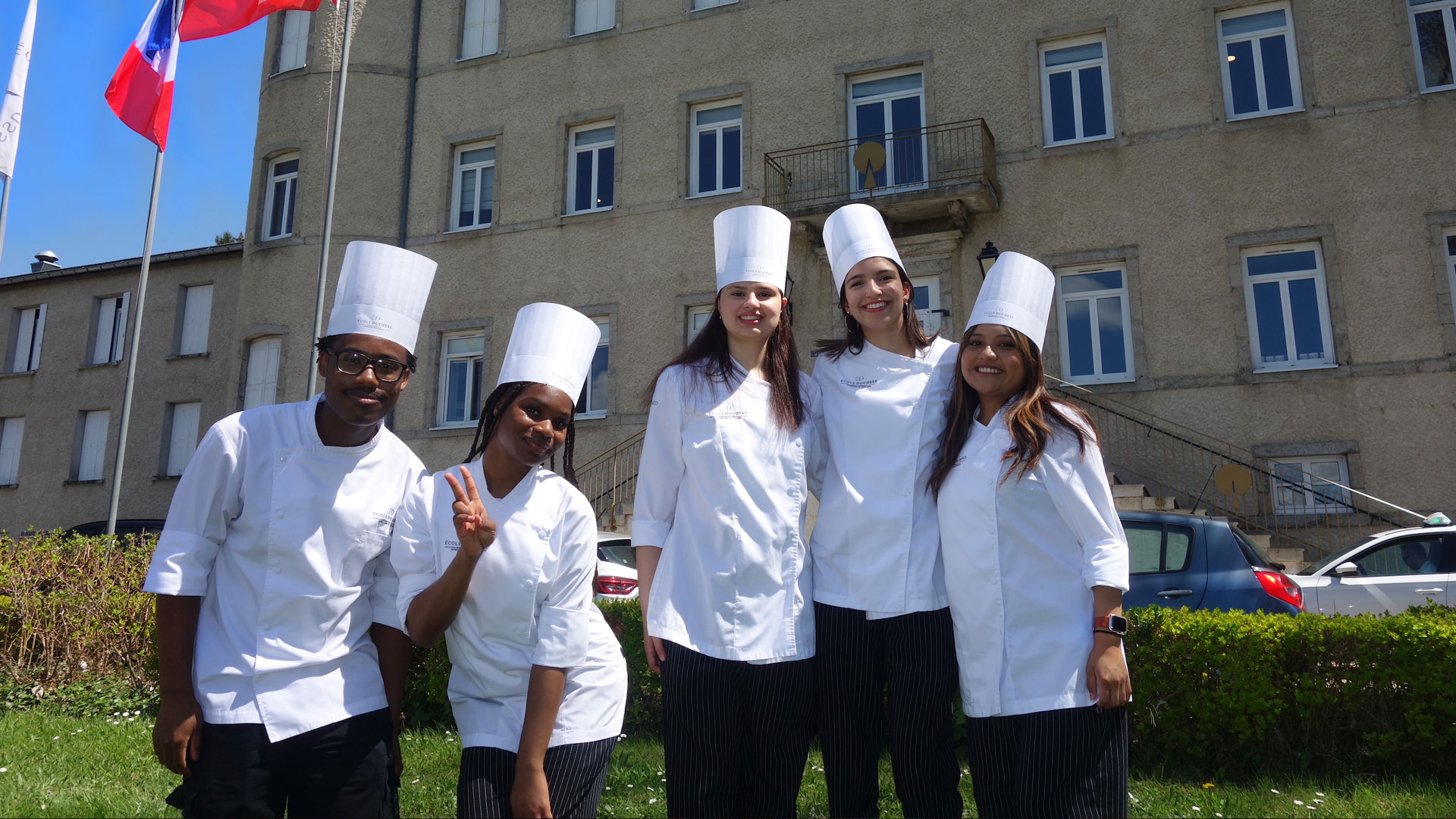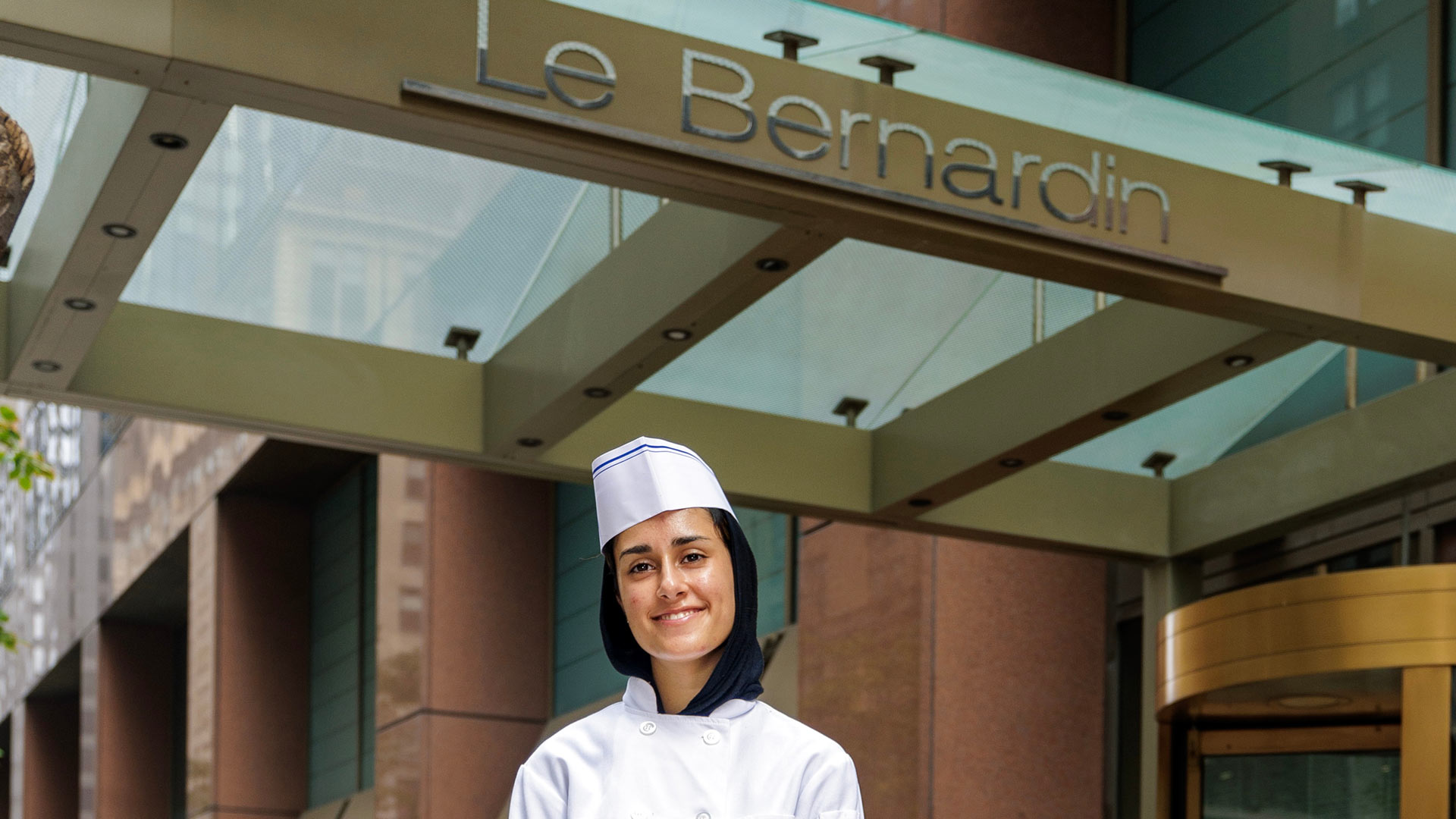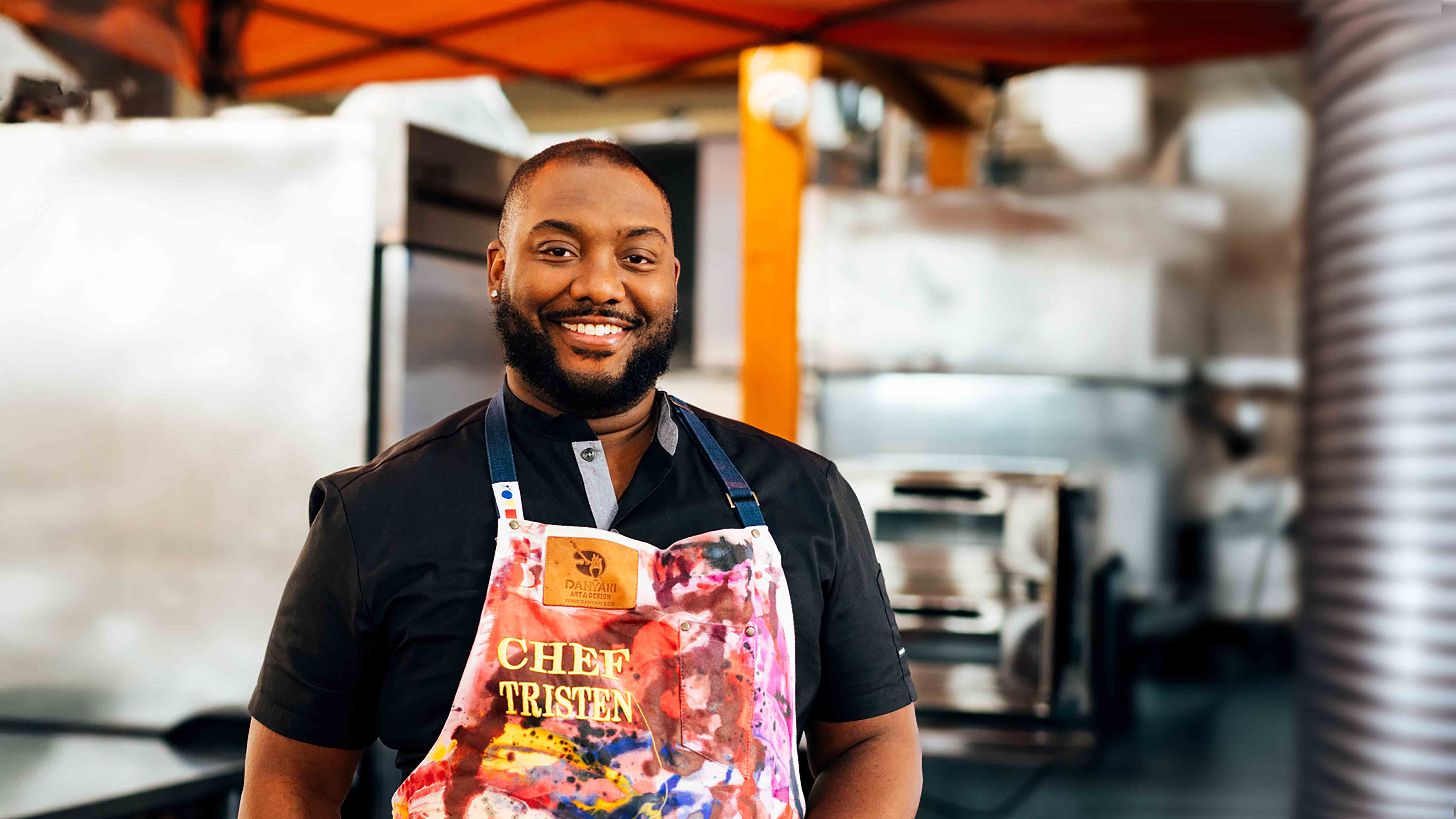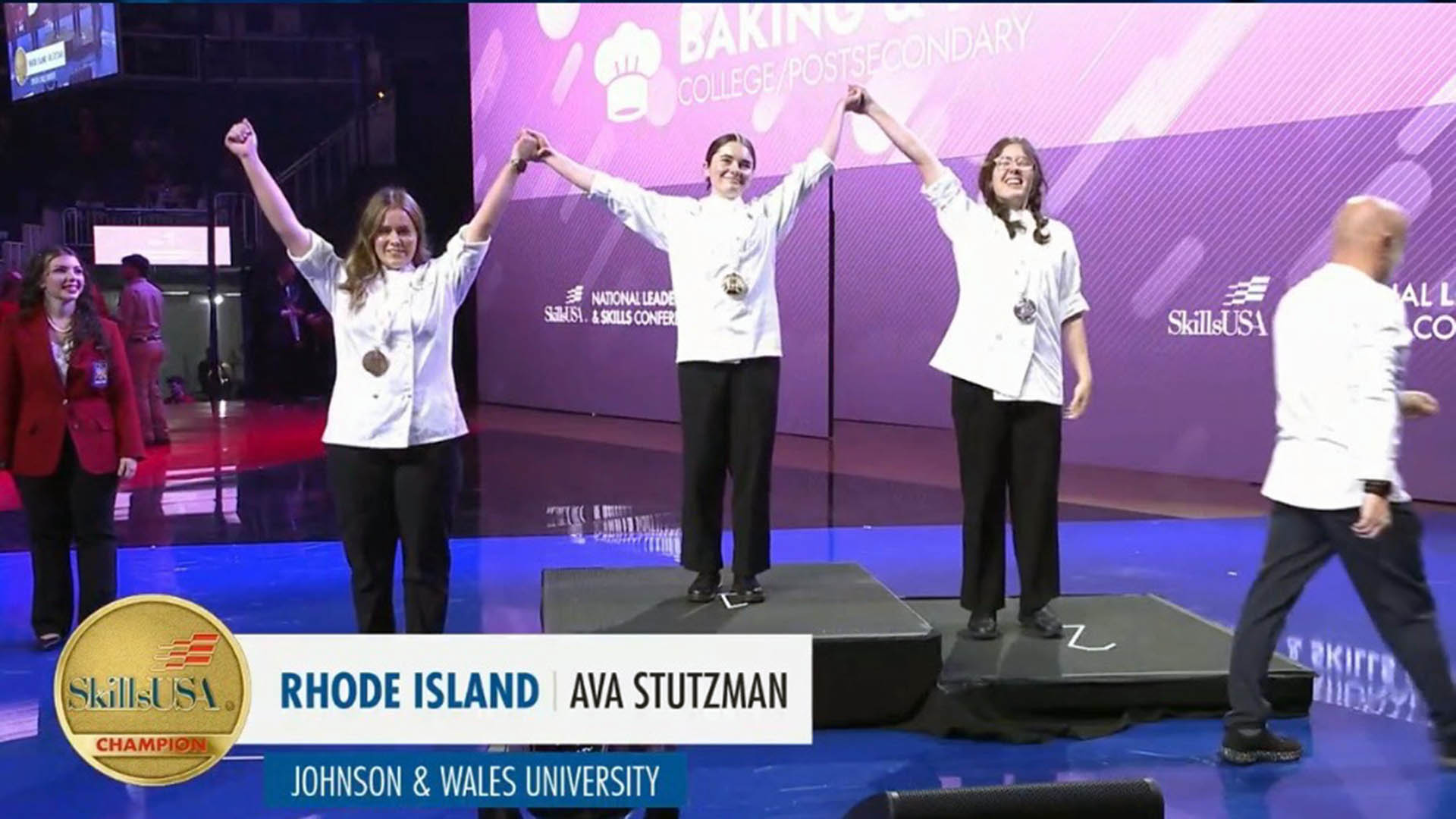JWU Pizza Expert Peter Reinhart on Empowering Students Creatively
November 2022 Update: Although Peter has retired as a full-time faculty member, he is still teaching for JWU Online.
JWU Charlotte Chef Peter Reinhart has taught at JWU for more than 20 years. During that time, he has written authoritative books on breads and baking; in his capacity as a contributing/research editor of “Modernist Bread” and a podcaster, he has also established himself as an authority on bread trends and innovative techniques. In light of his recent interview with South Park Magazine, we asked him to share his teaching philosophy — and a recipe for one of his pizza innovations from his latest book, “Perfect Pan Pizza” (Ten Speed Press, 2019).
In my twenty-plus years of teaching culinary and baking & pastry to our students, I have always felt that conveying information and skills is only part of my job. A much deeper and important role for all instructors is to prepare our students for a successful, meaningful life. Cooking (and academic) skills are a major part of that success, for sure, but life skills built around fundamental principles like punctuality, dependability, ability to work well with others, and the ability to reliably follow instructions are just as important, if not more so.
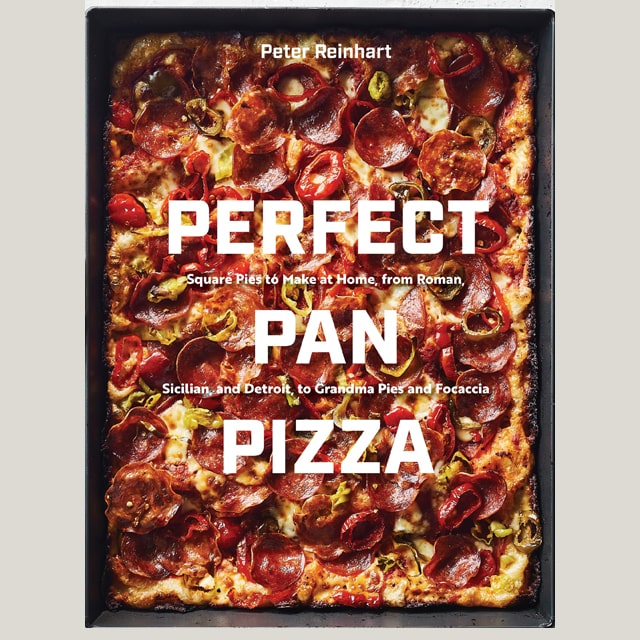
Connecting the dots can only happen when we have a lot of dots to connect, and that’s what these college years are for.
In the students’ Rhetoric classes every student learns about the Greek principle of ethos, which is the act of establishing credibility by making sound ethical decisions, such as avoiding plagiarism, citing references, and mastering their subject material. That’s why life skills are even more important than cooking skills and why every class stresses these regardless of the cooking or academic skills being taught.
And, in the realm of cooking skills, it is not enough for us to teach students how a dish is made and how to follow a recipe but, ultimately, we empower students to connect the dots of their training in order to be creative and to ultimately generate original recipes of their own. While it is not essential that every student become a published writer, every year I work with a number of talented students who also have aspirations to one day write their own cookbook. Creating original recipes and seeing them used by readers is one of the great joys and benefits of being immersed in the culinary world. In my most recent book, “Perfect Pan Pizza,” I applied this creativity to the creation of 35 never before seen versions of pizza. Pizza – which I define simply as dough with something on it – is a blank canvas, literally, so there really are infinite ways to make it.
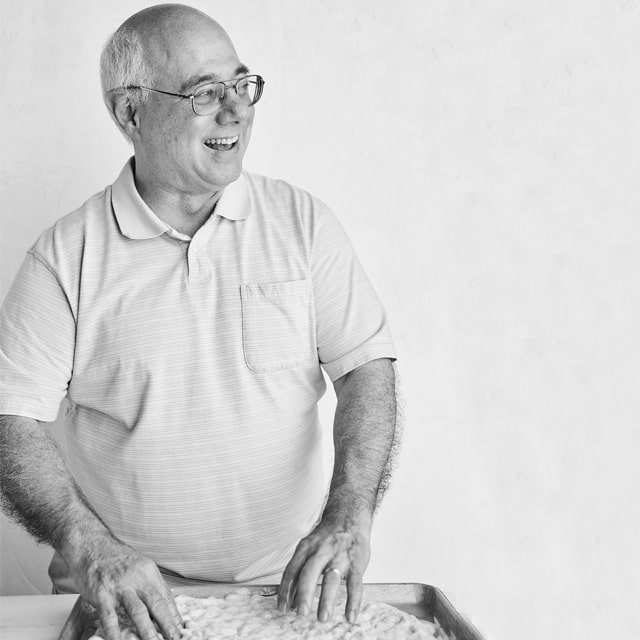
While I’ve had the thrill of writing a number of books that have allowed me to use and express my culinary skills in creative ways, my ultimate goal is to empower our students to do the same, whether in writing or simply on the plate, as they embark on their careers’ journey. Connecting the dots can only happen when we have a lot of dots to connect, and that’s what these college years are for, collecting the bits and pieces of our education so that when the time is right, we can correlate them in deep and satisfying ways.
“Perfect Pan Pizza,” beyond being a collection of recipes for some pretty amazing pizzas, is also about empowerment and what happens when we connect the dots of our life experience ad express them in new, creative ways on a blank canvas, even on a blank pizza crust.
Pizzas and breads are no longer my end product, however. As a Johnson & Wales faculty member, my products are my students, and nothing makes me prouder and more satisfied than when I see them achieve their own success and realize their dreams.
Follow Chef Reinhart’s adventures in dough (and interviews with other pizza/fermentation experts like Sandor Katz, Anthony Mangieri and more) via his blog, Pizza Quest.
Embedded Cheese Technique from Peter Reinhart’s “Perfect Pan Pizza”
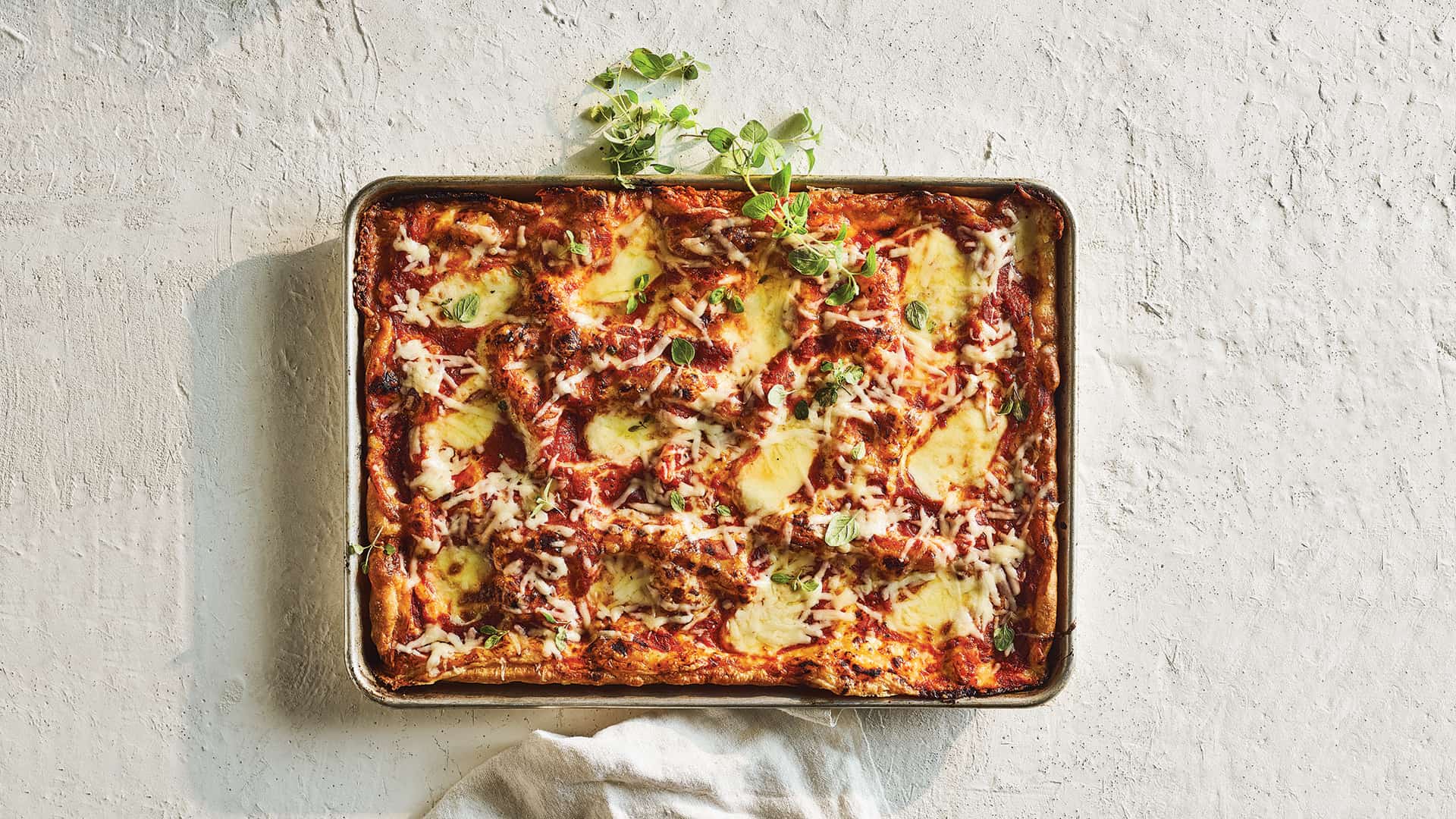
This is my own innovation and not the way it is done at any pizzeria or restaurant except for one, Mash’d, in Frisco, Texas, where I created this technique with Mash’d Operations Manager Shane Lambert, who asked me what would happen if we put half the cheese on the dough before the final rise. We decided there was only one way to find out, so we tried it. Not only did this extra step tenderize the dough, but it also enhanced the overall flavor. It was so successful that we made it part of the method. It was a breakthrough moment, as you will see when you try it.
For the deep-pan pizza method in this book, unlike those found in recipes on the web or in other books, the total cheese (cut into cubes, not shredded or grated) is applied in two stages, with half going on before the dough rises (so that it becomes embedded in the dough), and the other half is applied just prior to baking.
The amount of dough and cheese remains the same whether the pans are 2 or 3 inches deep (but do not use 1-inch pans for this style or the cheese and toppings will ooze out of the pan and into your oven).
The amount of olive oil (or oil and melted butter combo) used to grease the pans will vary from 1 tablespoon up to 3 tablespoons, depending on the size of pan used.
| PAN SIZE | DOUGH WEIGHT | TOTAL CHEESE WEIGHT |
|---|---|---|
| 6" by 6" | 5 ounces/142 g | 4 ounces/113 g |
| 8" by 8" | 8 ounces/227 g | 6 ounces/170 g |
| 9" by 9" | 10 ounces/284 g | 7.5 ounces/213 g |
| 9" by 13" | 14 ounces/397 g | 10 ounces/284 g |
| 8" by 10" | 10 ounces/284 g | 7.5 ounces/213 g |
| 10" by 14" | 16 ounces/454 g | 12 ounces/340 g |
| 6" round | 4 ounces/113 g | 3 ounces/85 g |
| 8" round | 6.5 ounces/184 g | 4.5 ounces/128 g |
| 9" round | 8 ounces/227 g | 6 ounces/170 g |
| 10" round | 9.5 ounces/269 g | 7 ounces/198 g |
Reprinted with permission from “Perfect Pan Pizza” by Peter Reinhart, copyright © 2019. Photographs by Johnny Autry. Published by Ten Speed Press, a division of Penguin Random House, Inc.
